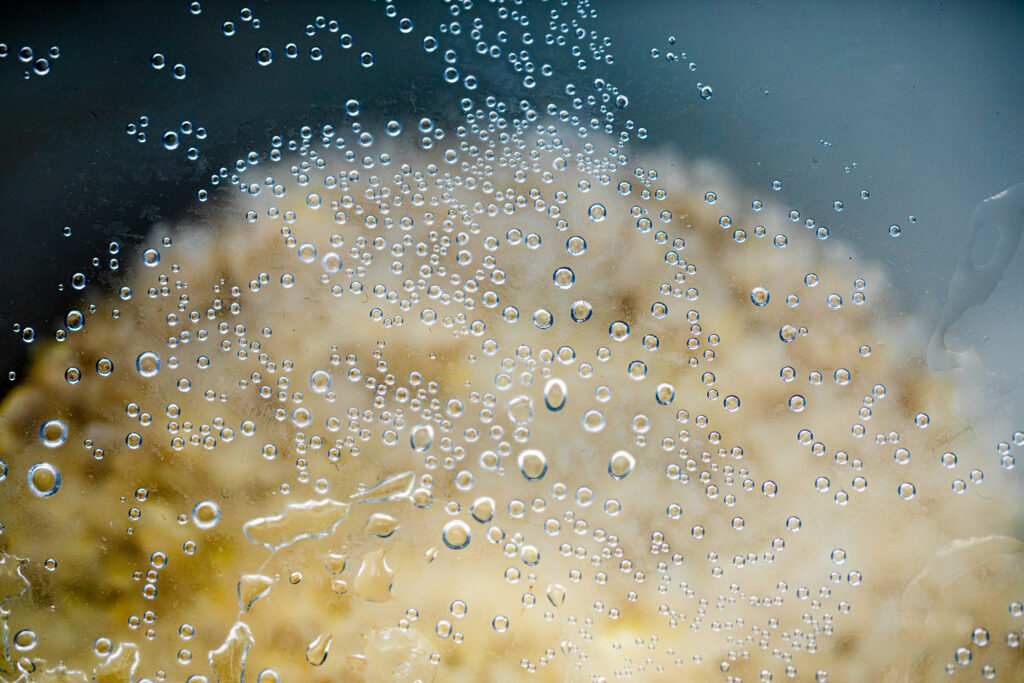
David Zilber:
Fermentation’s Avant Garde
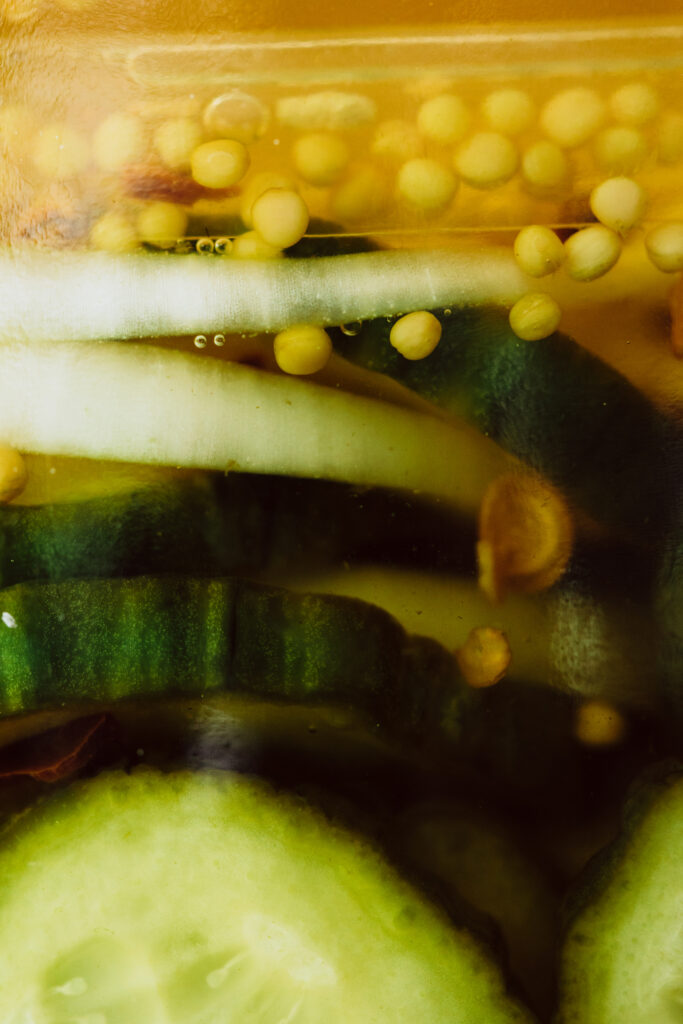
“Living organisms change and they change everything around them. If they didn't, there would only be one species of bacteria alive on Earth, and we would not exist.”
Natsai Chieza: So you started as a chef, infamously as Head Chef and the Head of Fermentation at noma, and now, at Novonesis’, a leading biotechnology company based in the Nordics, as Food Scientist. I’m so curious about the journey that you are on and the kinds of transitions you have experienced.
David Zilber: I had an 18-year-long career cooking in restaurants at the highest level. About a third of that was at noma before that ran its course. There aren’t many chefs who go through there expecting to be there forever. It’s pretty demanding on the body and the mind. So in 2020, when the world was topsy-turvy, I took part in the great resignation myself and found myself at Christian Hansen, now Novonesis.
When I was still at noma, some of the executives and the CEO came by for a meal. By this time, I had designed and was running the fermentation lab in the new restaurant, so I gave them a tour: our incubation chambers, our maturation rooms, and all our equipment. They were fascinated to know how much of the stuff being developed in the lab ended up on every dish. They invited me to their headquarters to return the favour, and this was the beginning of a fruitful collaborative relationship. They would send me bacteria or yeasts, and I would play around with them at noma and develop stuff for the menu with them. This was really cool because it’s only a few restaurants that get to play around with particular microbes that were doing really specific things: producing a flight of esters or polyphenols or whatever it might be.
In spring 2020, as I was leaving noma, someone from Christian Hansen reached out, asking if I’d like to collaborate on a project about African fermentation. I had already given my notice, but I visited them that summer after leaving noma. They asked what I wanted to do, and I was like, “I used to do? That’d be pretty fun.” They built me a fantastic kitchen—a playground for working with their microbes, creating new flavours, and solving industry problems. I work part-time, keeping one foot out of the corporate world, which suits everyone. They appreciate my outward-facing persona, whether on television, teaching master classes, or doing podcasts.
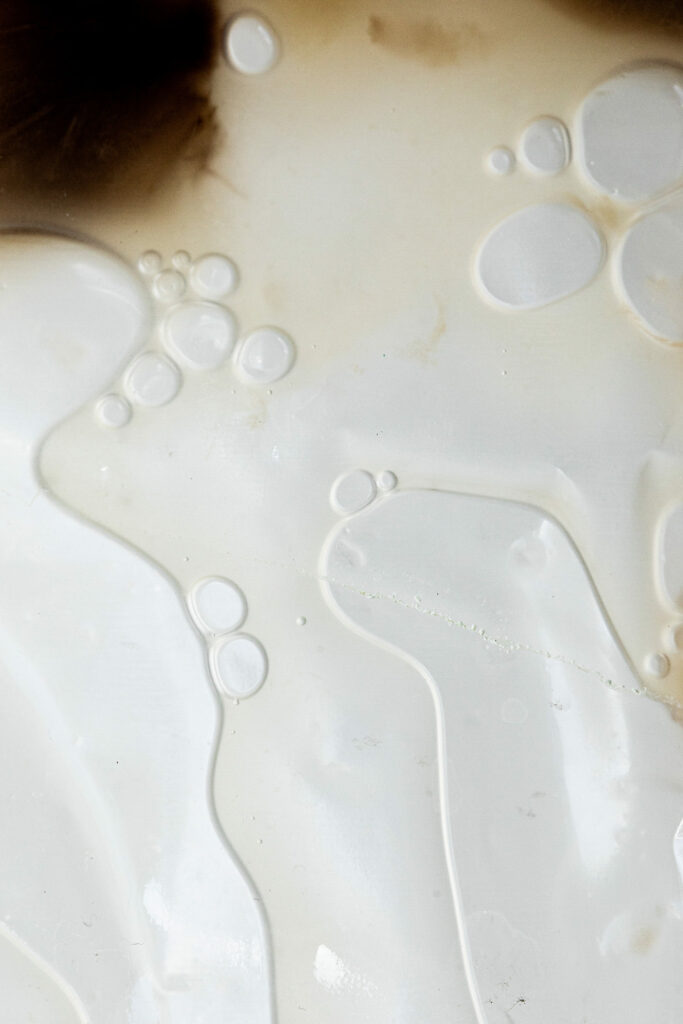
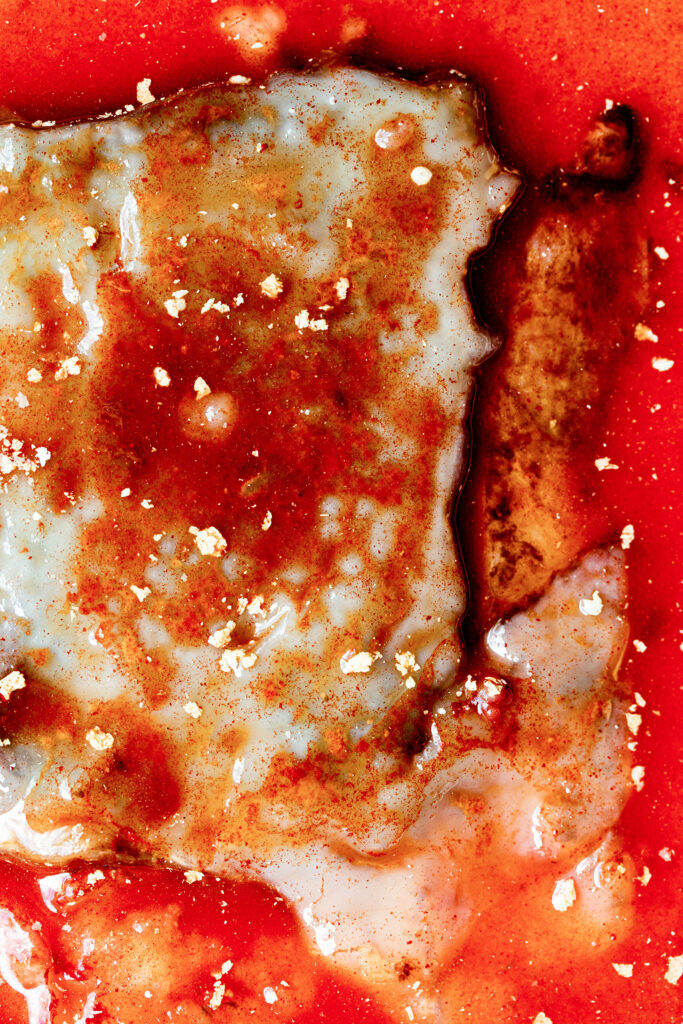
But you’re asking about the shift, and how that transition was for me. Coming from restaurants and the perspective of a culinary artist, when you have an idea, you just make it happen. I recall a great quote from Rick Rubin: “Everyone has that crazy voice in their head; artists are just the ones who take it seriously.” In a restaurant, gastronomy is both a craft and a culinary art. As a member of an R&D team or as an executive chef, you’re responsible for creating and exploring, often in a very creative context. You have to listen to that crazy voice to push the field forward and ask, “What if we did this? Is this possible?” At noma, Rene Redzepi and my colleagues embodied this mindset. The collaboration between the test kitchen and the lab was fantastic. Sous chefs, even without food science knowledge, would come with “what if” questions. For example, could we emulsify oil, water, and gel before it splits? I was always up for the challenge, especially in microbiology—whether it was growing mould on something or trying out new techniques.
At Novonesis, I quickly learnt that the industry moves much slower than I was used to, which was a tough adjustment in my first week, especially during Covid with an empty office. I designed a lab and project plans in a day, but my boss’ response made it clear the process would take months, not hours. The timeline here spans years, with numerous departments and considerations involved—patents, legal, logistics, and more. Yet, despite the slower pace, there’s still room for creativity, leading to meaningful innovations like new products or patents that make a real impact.
“you knew you were dealing with something that was inherently wild and trying to corral it, make it reproducible and consistent because that is the goal of a restaurant at noma's level.”
Natsai Chieza: A Michelin-starred restaurant like noma is steeped in the bespoke, the artisanal, and, I guess, the “small.” Can you give us a sense of the nuances between the paradigms of the scale of designing fermentation protocols for a plate at noma, vs. lactic acid ferment at an industrial scale, the kind Novonesis designs and calibrates for? What happens to taste and flavour as we move across scales?
David Zilber: That’s a great question. And I think about it a lot. The paradox of my job at noma was that through wild fermentation, we were trying to tap nature for wild tastes to make vinegar, pickles, lactic ferments, and so on. At the same time, you know, the job at noma wasn’t just pure R&D or just like fucking around for the sake of it. If we happened on something successful and it made it onto a menu—which was the goal of our job: to come up with cool things for the menu—then we were also the ones responsible for producing it. That looked like my team and I in the lab replicating those processes 550 times a week. So some things—like making a spear of asparagus perfectly mouldy while still keeping it al dente inside—not the easiest thing. When you’re making miso in these massive volumes, and you’re doing like 150 kilos at once, you can kind of blend each bucket, and maybe, oh, this one got a little bit sour. It wasn’t weighted down properly, you know—acetic S. Bacteria. I don’t know. We’ll just leave that out. And so you can kind of massage the end result. But with some of the servings, you knew you were dealing with something that was inherently wild and trying to corral it, make it reproducible and consistent because that is the goal of a restaurant at noma’s level: to make things amazing and do it the same. Always. At that high level. And that’s what the Michelin guide judges on. Primarily, you don’t know that they’re coming. They’re anonymous inspectors. And one of the most significant criteria is how consistent the restaurant is. Visit to visit.
Natsai Chieza: So the romantic and sought-out characteristic of wild ferments, that each batch has its terroir?
David Zilber: That’s the paradox.
Natsai Chieza: Right!
“Coming to Novonesis inverts the entire experience because this is a company whose success is predicated on cutting out as many variables as possible and guaranteeing reproducibility. [It] has its own ways of dealing with the change paradigm that is inherent to biological systems.”
David Zilber: The founders of a condiment company, who created a marketplace for fermented foods made by grandmas in the foothills of South Korea, taught me about the Korean idea of “son-mat,” or “hand taste.” They explained that when the grandmas make a signature ferment but are a bit sick that month or maybe their blood was a bit warmer, then the hand taste in the product will be a bit different. They might get their soybeans from the same place, but you know, you can taste the hand taste in the same village between the grandmas because they make it just a little bit different. They say that hand taste is always missing from industrially produced fermentation.
I was immediately like, “Oh, there’s a name for this!” A whole culture has a name for the thing that I know in my heart: the microbes teach me day-in and day-out, and based on my research into microbiology. In biology, there are like 3rd order, chaotic systems that have the power to influence populations down the line, which can send the direction of a ferment in all sorts of places, and never the same way. It’s such a complex system that I’ve always known that the notion of a consistent ferment is impossible to be true. That was the most challenging part of doing the job at noma: reconciling with the requirement of consistency. Living organisms change, and they change everything around them. If they didn’t, there would only be one species of bacteria alive on Earth, and we would not exist.
Coming to Novonesis inverts the entire experience because this is a company whose success is predicated on cutting out as many variables as possible and guaranteeing reproducibility.
Now, the amazing part about that is that the upper limit of cultures you can combine is five, maybe six. And then, after that, we lose control, which is telling, right? So there’s an enormous amount of work expended in the labs across the street that tries to get as much variability in outcome from as few moving parts as possible in the actual living agents themselves. How they play together matters, and what you feed the microbes matters. The order or lag phases of the growth matter. How do you know that just because you selected a microorganism for specific characteristics two years ago, if you keep reproducing this batch, it will be the same and do the same thing, too?
The answer is that we don’t! We always have to go back to the original when it was “good.” We have to keep coming back to the source material that had the criteria we were looking for. So Novonesis is a company that has its own ways of dealing with the change paradigm that is inherent to biological systems. Another really funny one is phage resistance.
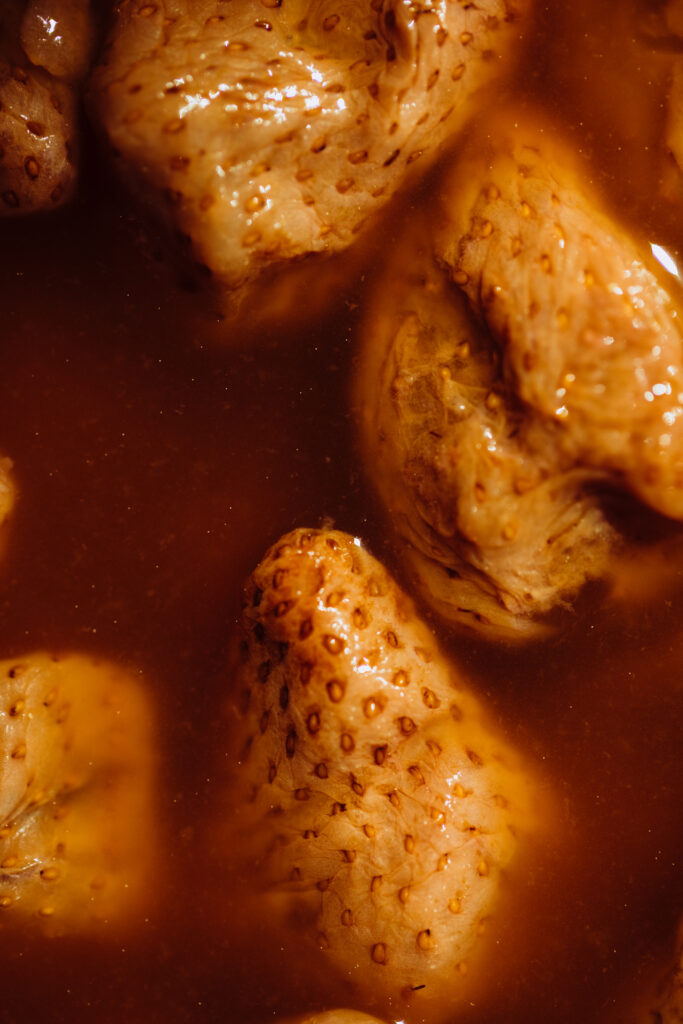
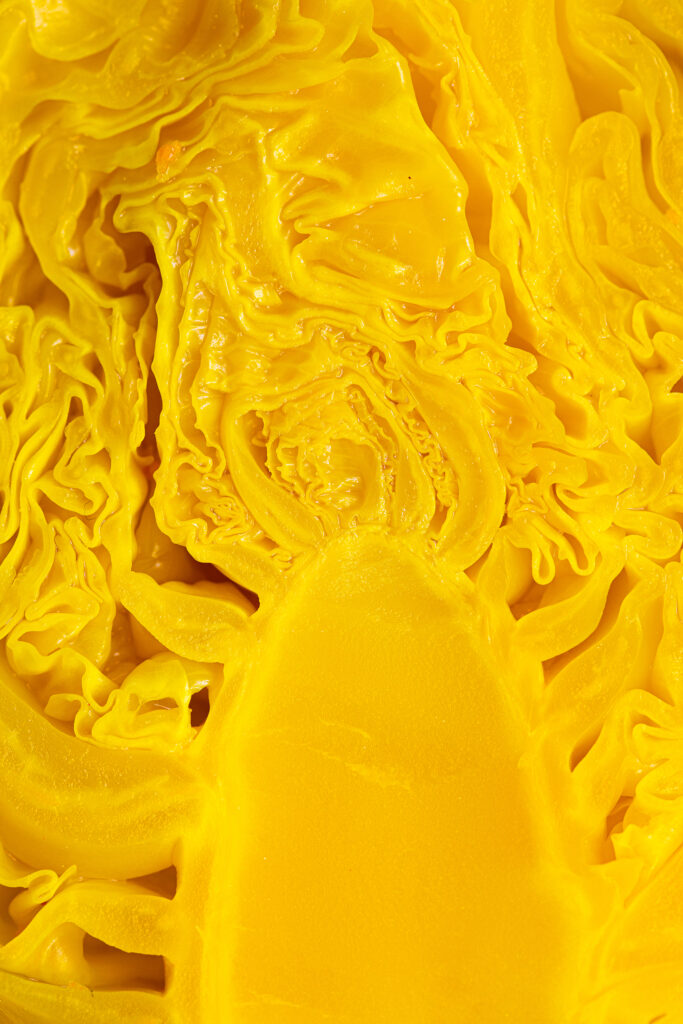
Natsai Chieza: David, can you tell our dear reader what phage resistance is?
David Zilber: Yes! Industrial fermentation faces a significant challenge: the process is rarely perfect, and eventually, something like a bacteriophage can infiltrate the system—whether it’s yoghurt, wine, or another product. When this happens, you might notice a drop in growth curves, longer fermentation times, or the culture struggling to acidify properly. This is similar to monoculturing, like the Panama disease outbreak a hundred years ago, which devastated banana crops across South America. When you grow only one type of crop across a vast area, something will inevitably exploit that vulnerability. The same principle applies to the factories of the world’s largest food producers. When you have just three organisms working on something like a nutrient-rich field (or milk proteins, for instance), it’s an attractive target for something like viral phages.
Another fascinating, often overlooked aspect is the complexity behind what seems like a simple process. A significant part of a microbiologist’s work involves creating cultures that food manufacturers cycle through their production systems. These cultures come from entirely different branches of the tree of life. We often talk about bacteria like Lactobacillus as if it’s a single entity or species, but that’s an oversimplification. It’s like grouping all four-legged animals—whether you’re talking about a kangaroo, an alligator, or an aardvark, they might share a characteristic, but they’re vastly different. Similarly, bacteria that are distantly related can produce the same phenotypic outcomes in food, such as consuming lactose or metabolising other nutrients at the same rate.
To combat the threat of phages and other issues, microbiologists create different cultures that perform similarly but come from entirely different bacterial families. These cultures are cycled through the production process on a schedule, preventing any single group from adapting or mutating to exploit the previous batch. By the time a phage might start gaining ground, a new culture takes over, effectively starving it out. If the microbiologists do their job well, the consumer never notices a difference—they just see “culture” on the label. However, behind that label lies hundreds, if not thousands, of hours of work to recreate the same end product consistently. It’s a bit like convergent evolution, but directed toward the evolution of a product made by living organisms.
To answer your initial question, if we’re just talking about taste, I’ll always find the flavour of a small-batch wild ferment more enticing and captivating than something produced by a “purebred” strain. While the industrial strains are like racehorses—they perform exceptionally well at what they do, whether it’s acidifying quickly, dominating an ecosystem, or maintaining stability without spoiling the product—they lack the complexity and character that wild ferments bring to the table.
Natsai Chieza: They’re well-designed for an industrial food system. But when we talk about that unique depth of flavour from wild fermentation, this cannot be widely distributed through industrial food systems due to biological limits. Hand taste can only be achieved from a completely different system.
David Zilber: You’re absolutely right. It’s like comparing a solo performance to a full orchestra. With spontaneous fermentation, you get these harmonies, contrasts, and layers that are often missing in more controlled, single-strain ferments. It’s those subtle interactions between different microorganisms that create depth and complexity in flavour, making the experience far more dynamic and engaging.
I’ve worked on several projects where I had to select a specific bacterial species to ensure the best taste in what used to be a wild fermentation process. This is often to solve for when a small to medium-sized producer experiences a significant, seemingly inexplicable loss of product, which can’t be justified from an accountant’s perspective. For example, a meal prep service might try to offer healthy, gut-friendly foods, like homemade kimchi, and everything works well for a few months. Then suddenly, they lose five tons of product because it all turned to mush. The situation seems unsolvable, and they can’t afford for it to happen again.
That’s when companies like Novonesis become crucial. You receive those calls, sympathise with the person on the other end, and do your best to find a solution. Sometimes, bad things happen, and it’s nobody’s fault—it’s just life. Ideally, we’d all live in close-knit communities where neighbours look out for each other, and if you went away for the weekend, the neighbourhood watch would ensure your house wasn’t broken into. But that’s not the world we live in all the time, so we have insurance. And that’s what Novonesis provides at the end of the day: a form of insurance for these businesses.
Natsai Chieza: This has been one of the most fascinating, insightful, and nuanced conversations I’ve ever had about scale, so I really appreciate it. It’s brought a lot of things into perspective, particularly the tension between striving for an ideal and the practical infrastructure that supports the world we live in. Somehow, those ideals have to coexist with the realities of our industrial food system, which relies on certain criteria to feed a large number of people and provide them with the most nutritious food that the system can offer.
I also find the idea compelling that even on a small scale—where it can make or break someone’s livelihood—there’s still a need for careful intervention. It’s essential to ensure that the product can sustain a livelihood. I love that concept.
David Zilber: My career in fermentation is full of paradoxes. Before I even started, I was on a Zoom panel with Sandor Katz, who’s known for championing small-scale fermentation. He was surprised to learn I’d joined Christian Hansen, a major player in industrial fermentation. It was jarring for him because he associated my work at noma with promoting the idea that fermentation should be democratised, something everyone can do at home.
While I still believe in that, I’m also a pragmatist. The world has shifted, with only 1.8% of the U.S. workforce now involved in food production, down from around 30% a century ago. Most people live in cities and don’t have the time or space to ferment at home. So, making the food system at the grocery store as sustainable, healthy, and delicious as possible is a win in my book. This doesn’t negate my work teaching hands-on fermentation workshops; rather, it complements it. I see it as approaching the problem from both sides, aiming to meet in the middle by championing diversity in both large-scale and small-scale fermentation.
Natsai Chieza: In the summer of 2015, I set myself a challenge. I decided to grow a vegetable patch and ferment anything I managed to harvest. I wanted to learn how to cultivate my own garden, and of course Sandor Katz’s Art of Fermentation was my guide. It turned out to be one of the most demanding research enquiries I’ve ever undertaken. At one point, I was simultaneously taking care of about 12 different ferments. I was on the clock and in the rhythm of their life cycles. I just remember the anxiety of being inundated with kefir water grains I had no room to store. They were everywhere and eventually in my dreams. (By the way, this experience definitely shifted any romantic notions I had of self-subsistence as a city dweller. Moments like these unearth the tension between contextual realities and systems change.) Profoundly, it was a visceral embodiment of this dance we—myself and these organisms—had all become a part of.
“That’s when it hit me—there’s no real boundary between these worlds. The microbes we use in fermentation are the same ones living inside us, blurring the lines between us and the food we create.”
Natsai Chieza: You’ve described the symbiotic encounters between humans and microbes. I’m curious—how has fermentation shaped your sense of self?
David Zilber: There’s a kind of apocryphal story I like to think of as my “superhero fermentation origin story.” When I was about 8 years old, I was eating Cheerios for breakfast but didn’t finish them. I left the bowl on the counter and went about my day. When I came home, it was late May or June—end of the school year—and I found that the bowl had congealed into something like yoghurt. My mom pointed it out, and it became a funny moment that stayed in the back of my mind.
Years later, when I was at noma and reading about yoghurt production, I recalled that moment. I think I was reading Ed Yong’s I Contain Multitudes at the time, and suddenly it clicked. I realised where those microbes had come from—they were from my mouth! The warm day, the sugars from the cereal, and the bacteria from my mouth all came together to create that yoghurt-like substance.
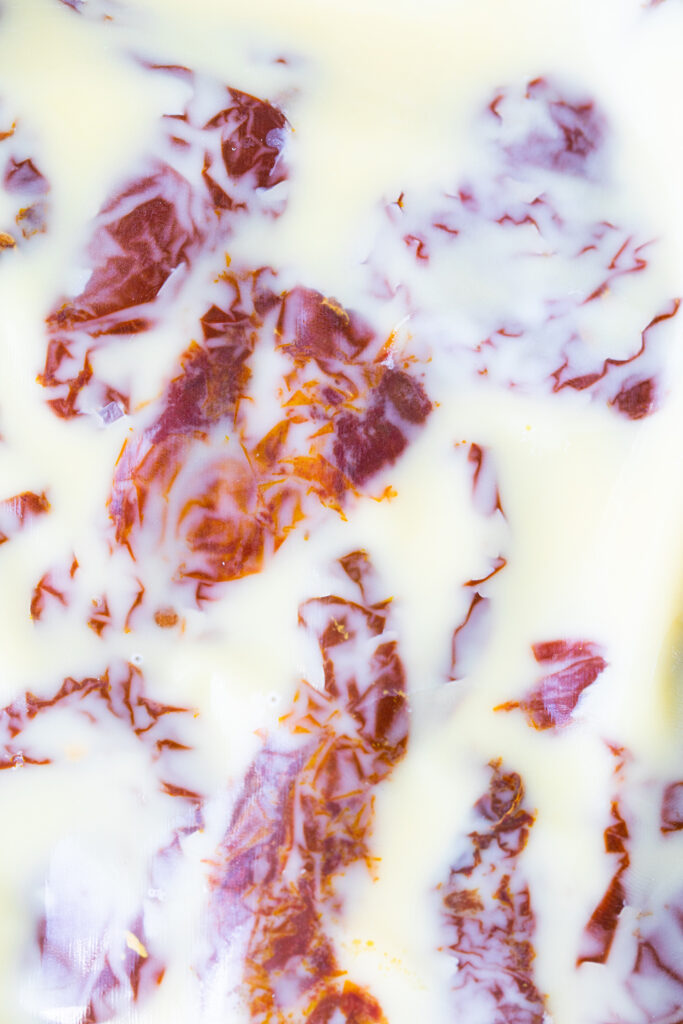
Fast forward another five years, and I was giving a talk at Stanford University, exploring this interconnectedness in detail. I came across a metagenomic analysis of the mouth microbiome, which showed that about 30% of these microbes belong to genera commonly used in fermentation. That’s when it hit me—there’s no real boundary between these worlds. The microbes we use in fermentation are the same ones living inside us, blurring the lines between us and the food we create. There’s no such thing as stasis—everything is constantly in flux. It’s not just about me or where I begin and end. The more you learn about microbes, the more you realise they don’t care about boundaries. Symbiosis is a perfect example of this. Even distinguishing between a pathogen and a commensal organism is context-dependent.
Take E. coli, for instance. There’s always some news crisis about it, yet E. coli is a normal and essential part of the human gut microbiome. Sure, certain strains can mutate and become pathogenic, but whether they cause harm also depends on factors like your overall health, underlying conditions, or your diet. So, even the idea of “good” versus “bad” microbes is not as clear-cut as it seems. Some microbes are beneficial most of the time but can cause problems under certain circumstances.
The more you delve into fermentation and microbiology, the more you realise it’s all about fuzzy, indeterminate boundaries. We try to fit things into neat categories, to say, “This is this, and that is that, and never the two shall meet.” But then you learn about things like horizontal gene transfer, and you realise it doesn’t make sense to compartmentalise. Life is a tangled tree, and we’re all part of it.
Natsai Chieza: It’s so vast and almost godlike.
David Zilber: That’s an interesting word to use.
Natsai Chieza: It just makes me think about how many of the scientists I’ve encountered debunk the stereotype that science is anti-spirituality. My experiences in the lab were informative and felt deeply spiritual. I truly believe that if everyone had the chance to culture a microorganism with tangible material properties—like mycelium for example—in just over a few days this simple act would be capable of providing the intellectual re-awakening we so need to reconnect with the living world. I might be biased, but I see fermentation as a gateway to that knowledge and understanding. And I do think it opens up questions of godliness. Is reaching God actually just reaching a higher understanding of how interconnected we all are, that this is the foundation of our existence on this planet? And that it mandates a different kind of posture to the culture of individualism that is responsible for all of the world’s ills. But I digress.
OK one last question, super quick! What’s for dinner tonight?
David Zilber: I don’t know, I don’t know! Last night, I had Mexican rice with some pork flank that I marinated and cooked yesterday. I just seared it off and added a slice of avocado that I needed to use up. I think there’s still a whole head of cabbage in the fridge, so maybe I’ll do something with that, like make a cabbage Caesar salad. I’m always definitely afraid of running out of capers at home.
Natsai Chieza: Oh, capers? Why?
David Zilber: Capers always come in those small jars, and you use half of them for one dish, then they end up sitting at the back of the fridge. I’m always wondering, “Do I have capers at home?” because my meal, like a puttanesca, would really suffer without them. These are the thoughts that run through my mind during the bus ride home—whether I need to stop by the grocery store. Maybe I’ll go with that cabbage Caesar after all. A refreshing, crunchy meal sounds pretty nice right now.
